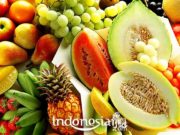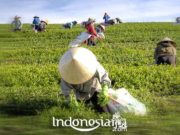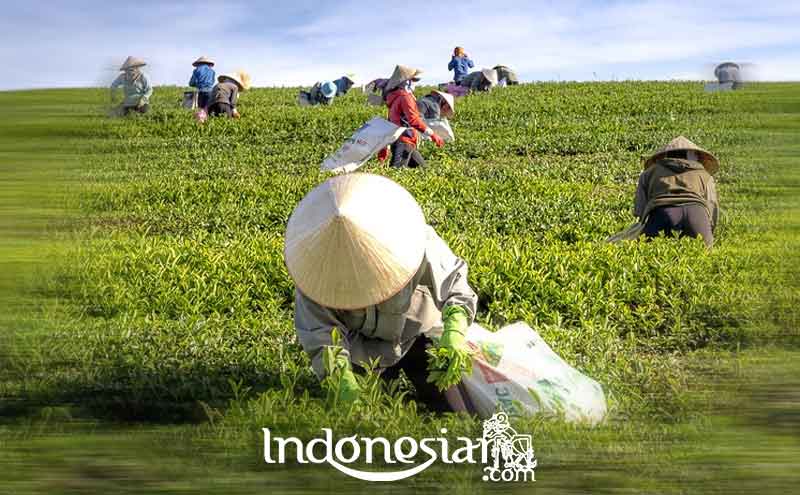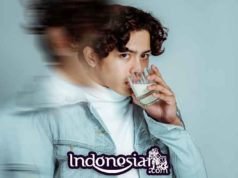In Indonesia there is a unique lake, namely Lake Satonda which is located on the island of Satonda which is located in the province of West Nusa Tenggara. The position of this island is located off the north coast of Sumbawa Island and is included in the Dompu Regency area. About three kilometers from the Sanggar Strait in the Flores Sea. Administratively it is in the area of Nangamiro Village in Pekat District.
Satonda Island and its surrounding waters cover an area of 2,600 hectares (ha). It consists of 453.7 ha of land and 2,146.3 ha of water. Satonda Island was formed from the eruption of Mount Satonda, tens of thousands of years ago. Satonda volcano is mentioned as an ancient volcano. It is said that it is older than Mount Tambora, which is about 30 kilometers from the island.
This island attracts the attention of scientists and researchers both from within and outside the country, because it is related to the phenomenal eruption of Mount Tambora on April 15, 1815 or before the eruption of Mount Krakatau in 1883.The eruption of Mount Tambora shook several parts of the world, spewing dust, and polluting the earth’s atmosphere during many years. It even tore through the thin ozone layer.
Satonda Island has a lake right in the middle of the island. The area is 335 ha with a depth of up to 86 meters. Based on the developing saga, it is stated that the lake in the middle of the island is a tear of regret from King Tambora. The king was angry that his proposal to a woman was flatly rejected. The king did not know that the woman he wanted to marry was his own biological mother, because when he was little the king had disappeared. The wrath of the king against the woman who later became his mother made the Powerful angry. He made Mount Tambora erupt and caused a giant tsunami and separated the mainland into small islands, one of which was Satonda.
Stephan Kempe from Germany and Josef Kazmierczak from Poland who is a European biology professor stopped by Satonda to research the lake in November 1984. At that time the Dutch Indonesian Snellius II Expedition was being held. His second research continued in 1989 and 1996.
Both see Lake Satonda as a rare phenomenon because the water is salty with a very high level of alkalinity compared to sea water in general. They then tried to reconstruct the history of the formation of the lake and its ecosystem. Kempe and Kazmierczak argue, Salty Satonda appeared at the same time as the formation of a crater due to the ancient Satonda eruption more than 10,000 years ago.
Originally, the lake contained fresh water as evidenced by the peat deposits under the sediment resembling marine minerals on the edge of the lake. The lake is then flooded with sea water that seeps through the crack of the collapsed crater wall. At that time, the sea level was 1 meter-1.5 meters higher than it is today. However, the sea level is slowly shrinking. Seawater filtering through the crater wall is slowing down. Now, the lake water level is relatively stable, which means that it is no longer connected to sea water.
Changes in the water environment of Lake Satonda also affect the species that live in it. The saturation and alkalinity of the water rise to levels that cause the annihilation of almost all mollusks, except for certain gastropod (snail / snail) species, such as Cerithium corallium. This species is thought to be an endemic subspecies of Satonda. In addition, several types of algae are also found.
Kazmierczak also took coral-like samples called stromatolites or microbial puffs, which are reef structures composed of microbial bacteria and algae. Stromalite material was abundant in the precambrian period, or about 3.4 billion years ago. The structure of stromatolite in its development has never been found again. The presence of stromatolites in Satonda is very interesting because it shows that this lake has an environment that resembles an ancient ocean, the precambrian. Stromatolites in the modern world are only found in water with very high salinity levels. Satonda for scientists becomes a contemporary environmental model that reflects the conditions of the oceans in ancient times.
The Tambora eruption has destroyed forests in Satonda. The absence of trees causes less evaporation, and a lot of rainwater collects in the crater. It causes the upper water layer to become fresher. At the same time, some of the older and saltier water is pushed down or out of the lake through the open pores of the volcanic rock.
With this high level of salinity, there is little diversity in the surrounding vegetation. One of them is Kalibuda, an endemic tree for Satonda. The people around Satonda call Kalibuda the Tree of Hope because they are believed to be able to grant all requests made by those who beg around the tree. You do this by hanging rocks or other objects such as cloth, shoes, cans, and cigarette packs by tying them to the Kalibuda tree trunk.
But not so with the underwater scenery in the waters around Satonda Island. There are many dive points to see beautiful and natural coral reefs and a collection of thousands of various types of ornamental fish. The government has also designated this island as a Marine Nature Park (TWAL) in 1999.
Here, among the dense coral reefs, can be found many clams with types of Acroporidae, Xenia sp, Favidae, Sarcophyton sp, Labophyton sp, Hetractris crispa, Nephtea sp, Capnella sp, Lemnalia sp, and Astrospicularis sp. In addition, there are blue starfish to thorny ones. Kima is included in the Bivalvian class, a group of soft-bodied animals protected by a pair of cupped shells.
Even less than two meters from the white sandy beach, we can find dense coral spots and home to beautiful fish such as groupers, moorish idols, and lionfish, which are not uncommon, even the clown fish can be seen hiding among them. anemone.
The types of flora that become the marine wealth around this volcanic island are ketapang (Terminalia catappa), sea pandanus (Pandanus tectorius), banyan (Ficus sp), sea waru (Hibiscus tiliaceus), nyamplung (Calophyllum inophyllum), Mentigi (Pempis sp) and tamarind (Tamarindus indica).
Come on, make Indonesia the best tourist destination for you and get information about Indonesia’s best tourist attractions from Indonesiar.com.


































